Exploring Benin and Delta State: Emotan Statue, Gele Gele Sea Port, Benin City History, Araya Bible Site, River Ethiope
The Emotan Statue is a significant monument located in Benin City, Edo State, Nigeria. The statue is dedicated to Emotan, a legendary figure in Benin history known for her role in the restoration of the monarchy during the reign of Oba Ewuare II. Here are key points about the Emotan Statue:
- Location:
- The Emotan Statue is situated in the heart of Benin City, near the Oba Ovoranmwen Square.
- Dedication to Emotan:
- The statue is dedicated to Emotan, a market woman who played a crucial role in the history of Benin by sheltering and supporting Prince Ogun, the son of Oba Ewuare the Great, during a turbulent period.
- Historical Significance:
Emotan (15th century) was a market woman who traded in foodstuffs around the Oba Market in the ancient Benin kingdom during the reign of Oba Uwaifiokun and Prince Ogun, who later took the name “Oba Ewuare the Great” after becoming the Oba of Benin.
- Emotan’s actions were instrumental in the restoration of the monarchy after a period of crisis and exile. Her assistance to Prince Ogun contributed to the eventual return of the prince to power as Oba Ovonramwen.
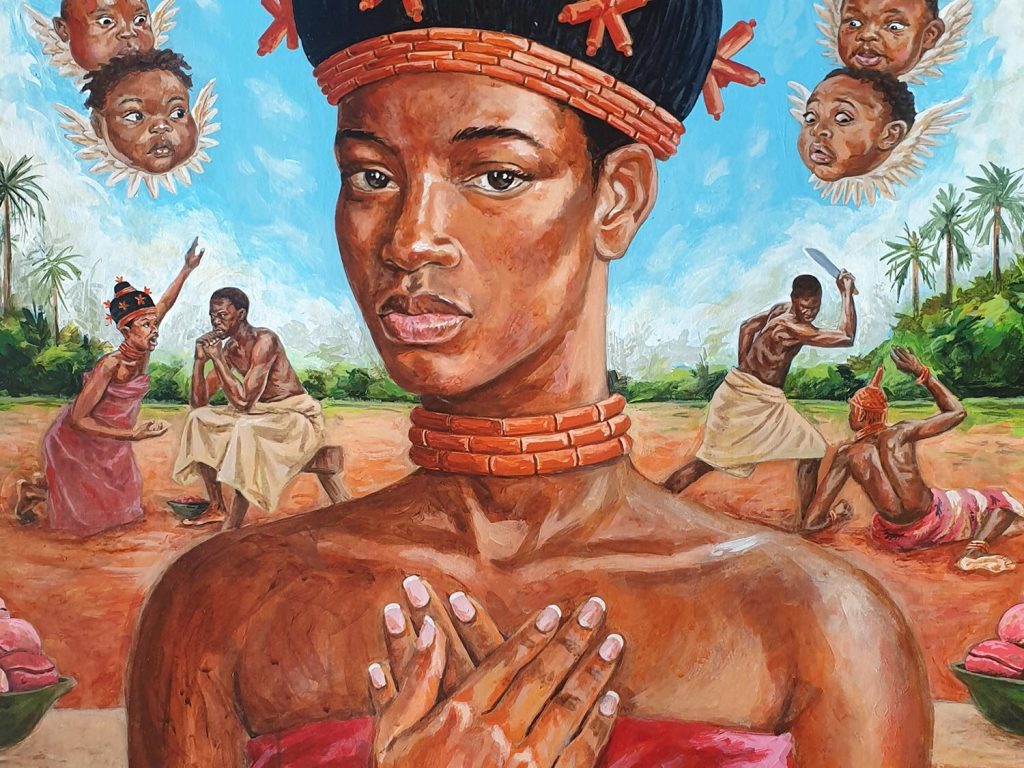
- Description of the Statue:
- The Emotan Statue is a bronze sculpture representing Emotan. It stands on a pedestal and depicts her in traditional attire, holding a baby in her arms.
- Symbol of Unity:
- The statue is considered a symbol of unity and resilience. It commemorates the historical events that led to the reunification of the Benin Kingdom.
- Cultural Heritage:
- The Emotan Statue is part of the cultural heritage of the Benin people, serving as a reminder of the contributions of individuals to the kingdom’s history.
- Tourist Attraction:
- The statue has become a popular tourist attraction, drawing visitors interested in the history and cultural heritage of Benin City.
- Restoration and Renovation:
- The statue has undergone restoration and renovation efforts to ensure its preservation and maintain its historical and artistic integrity.
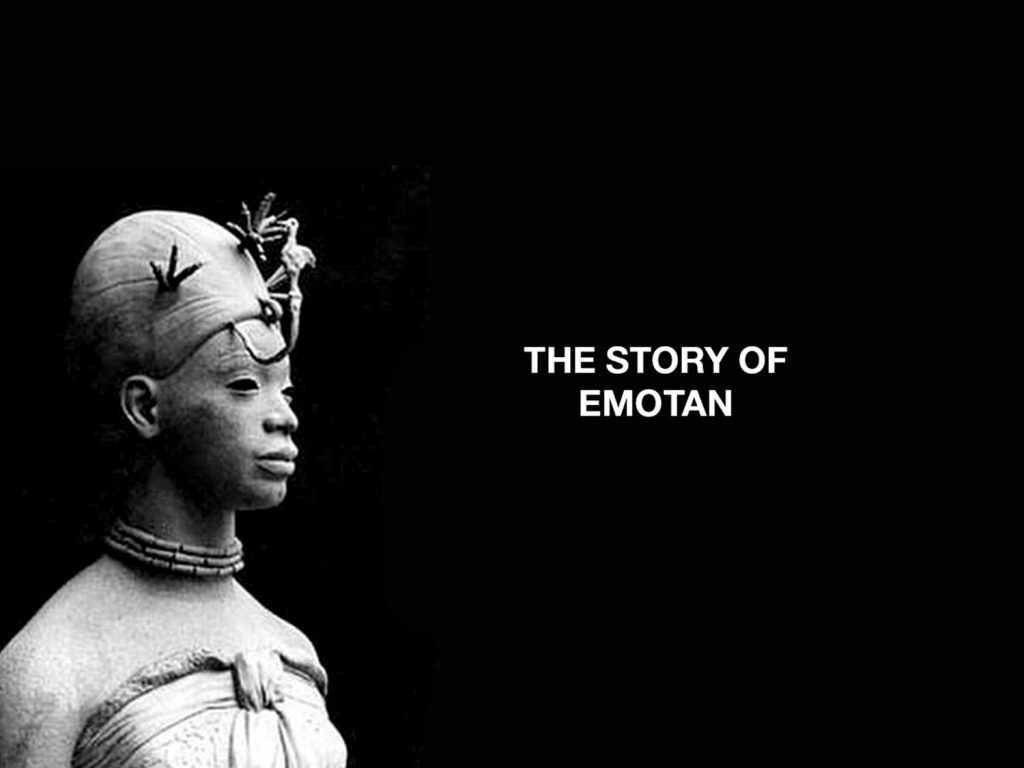
- Emotan Day Celebration:
- The Emotan Day Celebration is an annual event held to honor and celebrate the legacy of Emotan. It often includes cultural activities, ceremonies, and reflections on Benin history.
- Cultural and Educational Value:
- The Emotan Statue contributes to the cultural and educational value of Benin City, providing a tangible link to the city’s past and the resilience of its people.
Visitors to Benin City often include the Emotan Statue as part of their exploration of the city’s historical and cultural landmarks.
Gele Gele Sea Port: History and Trade Role in Benin

- Early European Contact:
- The first recorded contact with Europeans in the Benin Kingdom was made by Oba Ewuare the Great around 1440 AD when Ruy De Sequeira visited Benin City in 1472.
- Portuguese Influence:
- The Portuguese were among the early European traders who engaged in legitimate trade with the Benin Kingdom. This trade was likely centered around valuable commodities such as ivory, spices, and other goods.
- Gele Gele Sea Port:
- The Gele Gele Sea Port played a significant role in facilitating trade between the Benin Kingdom and European nations, particularly the Portuguese. It served as a crucial gateway for goods coming into and leaving the region.
- Legitimate and Illegitimate Trade:
- While legitimate trade involved the exchange of goods, including those produced within the Benin Kingdom, there were also instances of illegitimate trade, such as the transportation of slaves from the region to Europe.
- Extensive Use by European Powers:
- The Gele Gele Sea Port was extensively used by both the Portuguese and the British governments for more than half a century before the infamous British punitive expedition of 1897.
- Role in the Atlantic Slave Trade:
- The mention of slave transportation indicates the involvement of the Gele Gele Sea Port in the transatlantic slave trade, which had significant implications for the region.
- Benin Kingdom Historical Sites:
- The Gele Gele Sea Port, with its historical significance, is recognized as part of the Benin Kingdom’s historical sites. These sites contribute to the cultural and historical heritage of the kingdom.
- Punitive Expedition of 1897:
- The reference to the 1897 infamous British punitive expedition suggests a turning point in the relationship between the Benin Kingdom and the British, marking a period of conflict and colonial intervention.
- Cultural and Historical Importance:
- The historical Sea Port site holds cultural and historical importance, providing insights into the economic, political, and social dynamics of the Benin Kingdom during that period.
Understanding the historical context of trade, exploration, and interactions between the Benin Kingdom and European powers contributes to a broader appreciation of the region’s history and heritage. These historical narratives also highlight the complexities of trade relationships and the impact of colonial interventions on indigenous societies.
Historical Benin City and its History

The Royal Palace or the Oba’s Palace
The Oba Palace, also known as the Royal Palace or the Oba’s Palace, is a significant cultural and historical landmark located in Benin City, Edo State, Nigeria. It serves as the official residence of the Oba of Benin, the traditional ruler and spiritual leader of the Benin Kingdom. Here are key points about the Oba Palace:
- Location:
- The Oba Palace is situated in the heart of Benin City, the capital of Edo State. It is a central and iconic structure within the city.
- Role of the Oba:
- The Oba of Benin is a revered figure with both cultural and spiritual significance. The Oba serves as the custodian of the kingdom’s traditions, history, and customs.
- Architectural Design:
- The palace is characterized by traditional Edo architecture, reflecting the cultural heritage of the Benin Kingdom. It features a combination of historical and artistic elements.
- Cultural Significance:
- The Oba Palace is a symbol of the continuity of the Benin Kingdom’s cultural identity. It is a living representation of the kingdom’s historical and dynastic traditions.
- Historical Artifacts:
- The palace is known for housing a collection of historical artifacts, regalia, and royal objects that have been passed down through generations. These items hold cultural and historical importance.
- Inner Courts:
- The palace complex consists of inner courts that are accessible only to certain dignitaries, members of the royal family, and selected individuals. Each court has its own significance and function.
- Iwebo Ceremony:
- The Iwebo ceremony is a traditional event held at the Oba Palace, during which the Oba addresses the kingdom and makes important pronouncements. It is a significant cultural and communal event.
- Coronation Ceremonies:
- The Oba Palace is the focal point for important ceremonies, including coronations of new Obas. These ceremonies are marked by cultural rituals and celebrations.
- Tourist Attraction:
- The Oba Palace is a major tourist attraction, drawing visitors interested in the rich history and culture of the Benin Kingdom. Tourists may explore designated areas of the palace to learn about its history.
- Preservation Efforts:
- Efforts have been made to preserve and maintain the Oba Palace as a historical and cultural heritage site. Renovation and conservation initiatives aim to protect the palace’s architectural integrity.
- Community Involvement:
- The palace serves as a focal point for community activities and gatherings. The involvement of the local community is integral to the preservation and celebration of cultural traditions.
The Oba Palace stands as a testament to the enduring cultural heritage of the Benin Kingdom. Visitors to Benin City often include the Oba Palace as part of their exploration of the city’s historical landmarks.
The Benin Moat
The Benin Moat, also known as Iya in the local language, is a historic and monumental earthwork that encircles the ancient city of Benin in present-day Edo State, Nigeria. The Benin Moat is one of the largest man-made structures in the world and is recognized for its cultural, historical, and architectural significance. Here are key points about the Benin Moat:
- Purpose and Construction:
- The Benin Moat was constructed around the city of Benin during the reign of Oba Oguola in the 13th century and expanded over subsequent centuries.
- It served both defensive and symbolic purposes, protecting the city from external threats and serving as a symbol of the kingdom’s strength.
- Scope and Size:
- The Benin Moat is an extensive network of earthworks, trenches, and embankments that encircle the historic city of Benin.
- It is estimated to have originally covered about 16,000 square kilometers and is considered one of the largest man-made earthworks in the world.
- Defensive Structure:
- The primary function of the moat was defensive. It provided protection against external invasions, particularly during times of conflict.
- The moat was strategically designed to impede the advancement of invaders and served as a formidable barrier.
- Symbolic Significance:
- In addition to its defensive role, the Benin Moat held symbolic importance. It represented the unity, strength, and territorial integrity of the Benin Kingdom.
- Cultural Heritage:
- The moat is an integral part of the cultural heritage of the Benin people. It reflects the engineering prowess of the ancient kingdom and its ability to undertake large-scale construction projects.
- Archaeological Studies:
- Archaeological studies of the Benin Moat have been conducted to understand its historical development, construction techniques, and cultural significance.
- Recognition by UNESCO:
- The Benin Moat is part of the cultural landscape of the historic city of Benin, which was designated a UNESCO World Heritage Site in 1999. The moat contributes to the Outstanding Universal Value of the site.
- Conservation and Preservation:
- Efforts have been made to preserve and maintain the Benin Moat as a historical and cultural treasure. Conservation initiatives aim to protect the moat from erosion and degradation.
- Tourist Attraction:
- The Benin Moat is a major tourist attraction, drawing visitors interested in exploring the historical and cultural heritage of Benin City.
- Educational Value:
- The moat serves as an educational resource, providing insights into the architectural achievements and historical significance of the Benin Kingdom.
- The Benin Moat is often seen as part of the exploration of the city’s rich history and cultural landmarks. It stands as a testament to the engineering skills and strategic planning of the ancient Benin Kingdom.
The Benin National Museum
The Benin National Museum is a prominent museum located in Benin City, Edo State, Nigeria. The museum is known for its extensive collection of artifacts and artworks that showcase the rich cultural heritage and history of the Benin Kingdom. Here are key points about the Benin National Museum:
- Location:
- The Benin National Museum is situated in Benin City, the capital of Edo State in southern Nigeria. The city has historical significance as the capital of the ancient Benin Kingdom.
- History:
- The museum was established in 1973 and has since played a crucial role in preserving and showcasing the cultural heritage of the Benin Kingdom.
- Collection:
- The museum houses a diverse collection of artifacts, artworks, and historical objects that span various periods of Benin history.
- It is renowned for its collection of Benin Bronzes, which are brass and bronze sculptures and plaques that were created by the skilled craftsmen of the Benin Kingdom.
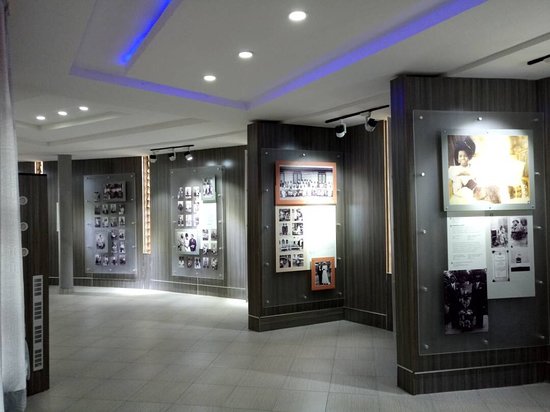
- Benin Bronzes:
- The Benin Bronzes are particularly significant, depicting various aspects of Benin life, including the court, ceremonies, and rituals.
- These sculptures were created during the pre-colonial period and are considered masterpieces of African art.
- Cultural Artifacts:
- In addition to the Benin Bronzes, the museum’s collection includes traditional artifacts, royal regalia, masks, textiles, and other objects that highlight the cultural practices of the Benin people.
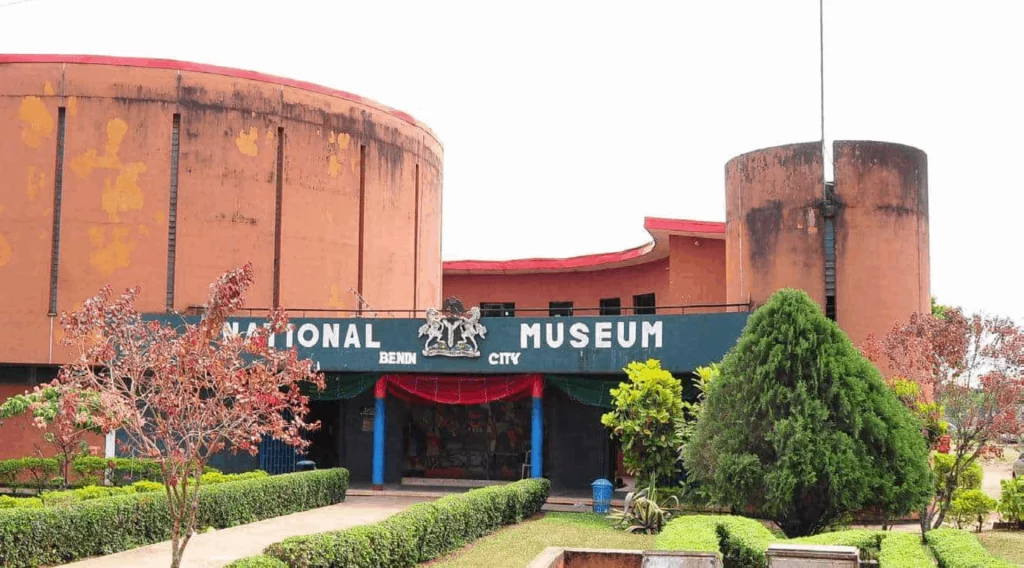
- Archaeological Finds:
- The museum also features archaeological finds from excavations in and around Benin City, providing insights into the historical development of the region.
- Kingdom History:
- Exhibits in the museum contribute to the understanding of the history, traditions, and governance of the Benin Kingdom, including its powerful monarchy.
- Educational Role:
- The Benin National Museum serves an educational role by providing information about the cultural and historical context of its exhibits. It is a valuable resource for researchers, scholars, and students.
- Tourism:
- The museum is a major tourist attraction, drawing visitors from Nigeria and around the world who are interested in exploring the cultural richness of the Benin Kingdom.
- Conservation Efforts:
- The museum is involved in conservation efforts to preserve its artifacts and maintain the historical integrity of its collection.
- Community Engagement:
- The museum engages with the local community, promoting awareness and appreciation of Benin’s cultural heritage.
Miraculous Araya Bible Site Story, Delta State

- Miraculous Descent of the Holy Bible (1914):
- In August 1914, it is believed that a copy of the Holy Bible descended miraculously upon a spot in Araya, Delta State.
- The miraculous event is said to have attracted Christian pilgrims, especially during the Easter season.
- Visions and Dreams Predicting a Miraculous Gift:
- Early missionaries who came to Araya Village reportedly received visions and dreams predicting the arrival of an unknown miraculous gift.
- Discovery by Local Women:
- During the transportation of farm yields to a nearby creek on a rainy day, two women discovered an open Bible on their yams.
- Despite the wet surroundings, the Bible was found to be dry, which shocked the discoverers.
- Carrying the Bible to White Missionaries:
- Upon the discovery, the women, after consultation with village heads, decided to carry the Bible to the White missionaries in the area.
- Loss and Rediscovery:
- Unfortunately, the Bible was lost, presumably in transit to England. However, years later, there was a decision to commemorate the exact spot of the Bible discovery site.
- Commemoration of the Bible Site:
- The decision to commemorate the Bible discovery site suggests the cultural and historical significance attributed to the event.
- The site is likely to be a place of importance for the local community and Christian pilgrims, serving as a reminder of the miraculous descent of the Holy Bible.
- Cultural and Religious Impact:
- The story reflects the intertwining of cultural and religious elements in the community, with the Bible’s descent being considered a miraculous event.
- Pilgrimages and Easter Celebrations:
- The site’s association with Christian pilgrimages, especially during the Easter season, underscores its ongoing significance for the community.
- Loss and Rediscovery Narrative:
- The narrative of the Bible being lost and later commemorated adds an element of mystery and intrigue to the story.
The Bible Site in Araya appears to be a place with a unique history, blending religious beliefs, cultural traditions, and the impact of missionary activities in the region.
River Ethiope: Origin, Myth, Significance

The River Ethiope, originating from Umuaja in Ukwuani Local Government Area, Delta State, Nigeria, is indeed a significant natural and cultural phenomenon. Here are key points based on the information you provided:
- Unique Origin:
- The River Ethiope is believed to be the deepest inland waterway in Africa.
- It originates from the foot of a giant silk-cotton tree at Umuaja, making it unique compared to the sources of other rivers.
- Course and Size:
- The river courses through Delta State, passing through Abraka on its way to Sapele.
- It becomes cavernous enough along its course to harbor ocean-going vessels.
- Unnatural Purity:
- The River Ethiope is known for its unnatural purity, and at certain points, one can see the bottom of the water from the bank, creating a false sense of shallowness.
- Sacred Location:
- The river is considered sacred, with its source having spiritual significance.
- It sprouts from four different locations, with two directly underneath the giant silk-cotton tree and the other two around the tree.
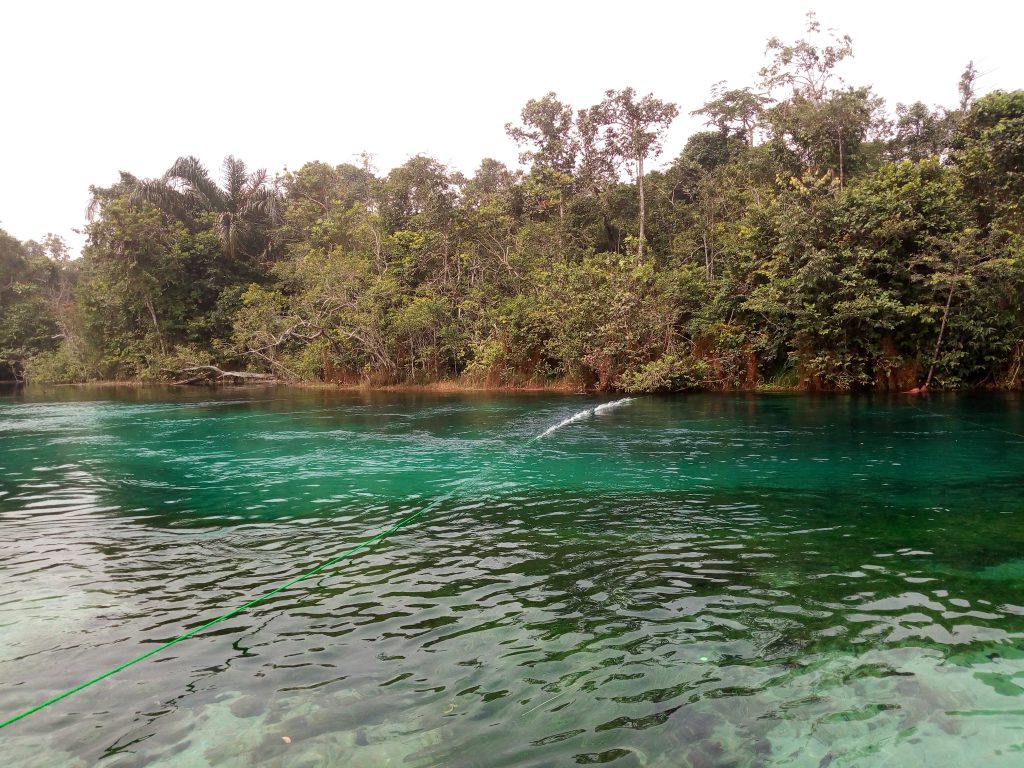
- Restricted Areas:
- Some areas of the grove surrounding the river source are restricted to visitors due to its sacred nature.
- The Onoku shrine is located in the grove, and a footpath leads to it.
- Spiritual Affiliation:
- The river is spiritually affiliated, and it is considered a sacred location for worshippers.
- The giant silk-cotton tree is adorned with white and red clothes, and sacrificial objects are placed around it.
- Mysterious Drownings:
- There have been reports of mysterious drownings in the river, especially among non-indigenes and males.
- Some believe that the river goddess accepts annual sacrifices in the form of drownings.
- Debunking the Claims:
- Local leaders dispute the claims of the river goddess intentionally drowning people.
- It is suggested that people, deceived by the river’s shallow appearance, dive into unsafe areas and drown.
- Global Worshippers:
- The shrine attracts worshippers from around the world who come to pay homage to Onoku, the deity associated with the river.
- Worshippers bring gifts and sacrifices to seek blessings.
- Tourism Potential:
- The River Ethiope has significant tourism potential, attracting visitors who are willing to pay to view the river source.
- The state government has built structures to exploit this potential, but they may face challenges due to the spiritual and religious connotations.
- Irrigation and Agriculture:
- The river is expected to aid in irrigation for a large area of land in Abraka, supporting the Federal Government’s cassava bread and high-quality Cassava Flour Development Initiative.
- Government Challenges:
- The government faces challenges in fully tapping into the tourism potential due to the spiritual and religious beliefs attached to the river.
- Concessions have been made to indigenes to manage facilities close to the river source.
The River Ethiope’s significance extends beyond its physical attributes, intertwining with cultural, spiritual, and economic aspects of the communities it passes through. It is both a natural wonder and a cultural heritage site.
Related Reading Nigeria’s Diverse Achievers: Balewa, Emeagwali, Ribadu, Adichie, Olowokandi
